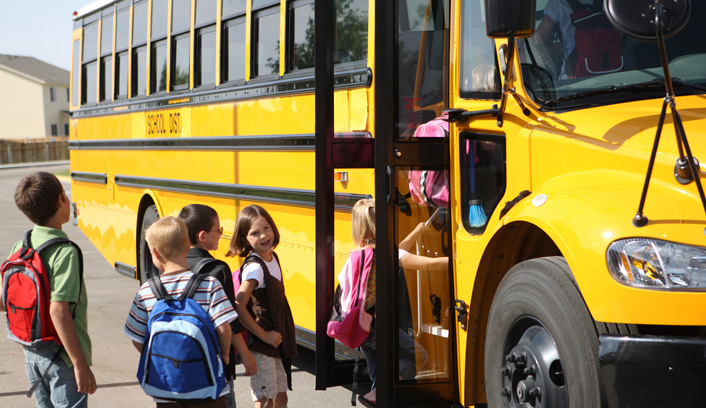As children across the Palmetto State make their way back to school this week, Safe Kids South Carolina manager Heidi Aakjer takes a look at six important areas for parents and their kids to understand when it comes to navigating their school days.

The wheels on the bus…
- Walk with children to the bus stop and wait with them until the bus arrives.
- Tell kids to stand at least three giant steps back from the curb as the bus approaches and board the bus one at a time. They should be taught to wait for the bus to come to a complete stop before getting off and never to walk behind the bus.
- After exiting the bus, children should take five giant steps in front of the bus, make eye contact with the bus driver, and cross only after looking left, right and left again.
- Slow down in school zones near bus stops and stay alert and look for kids who may be trying to get to or from the school bus. Slow down and stop if you’re driving near a school bus that is flashing yellow or red lights. Also drive with an ear and eye out for kids who may be crossing the street or riding a bike.
Get safely to school on two wheels…
- Wear a helmet. It is the single most effective safety device available to reduce head injury and death from bicycle crashes.
- Ride as far as possible on the right side of the road — with traffic and not against it – while using appropriate hand signals and respecting traffic signals by stopping at all stop signs and stoplights.
- Wear bright clothes and accessories that have retro-reflective materials to improve visibility to motorists.
… And four wheels
- Place children in a booster seat in the back seat of the car. Children are 45 percent less likely to be injured in a crash while in a booster seat in the back seat than children using a seat belt alone. In the booster seat, make sure the lap and shoulder belts fits your child. Vehicle seat belts are designed for an average-sized adult, and children generally are between eight to 12 years old before they are large enough for one to properly fit.
- Make it a rule that kids younger than 13 ride like a VIP – in the backseat. Front-seat air bags also can be dangerous to children 12 and under because the force and speed with which they inflate can lead to serious injury or death.
- When carpooling, have enough seating positions and booster seats for every child in your car and make sure kids enter and exit curbside.
- If teenagers are driving, they should always strap in and so should their passengers. Compared with other age groups, teens have the lowest rate of seat-belt use. Limit distractions – don’t use a cell phone or text while driving, now illegal in South Carolina.
Getting there on foot
- Cross streets with children under the age of 10. Cross streets at corners and use traffic signals and crosswalks whenever possible.
- Always walk on sidewalks or paths. If no sidewalks are available, always walk facing traffic as far to the left as possible. Never run or dart out into the street or cross between parked cars. Most injuries happen mid-block or someplace other than intersections.
- Look at drivers to make sure they see you, eye contact with them, before crossing in front. Watch out for cars that are turning or backing up.
- When using a cell phone, make sure to stop walking and find a safe area to talk. Be sure to look up and pay extra attention when using headphones and to remove them when crossing the street.
The sporting side of safety
- An adult should supervise during any sport or recreational activity. Ensure a safe playing environment and the enforcement of safety rules for your children. Good sportsmanship should be practiced at all times.
- Get a general health exam for your children before enrolling in a sports program. They also should be provided with proper training and skills-building when learning a new sport so that they are physically and psychologically conditioned for its demands.
- Make sure that coaches are encouraging children drink an adequate amount of liquids while engaging in athletic activities and provide frequent rest periods during hot or humid weather. On-field staff should be trained in first aid and CPR.
- Provide your children with sport-specific safety gear that fits properly.
Safe Internet practices
- Monitor your children’s Internet browsing by keeping the computer in a common room. Explain which websites are acceptable for them to use and which social media sites, chat rooms, games, blogs and music downloads are off-limits. Make sure your children understand that you have the authority to monitor browsing histories and texts on mobile devices.
- Teach your children to never reveal their personal information, including name, address, phone number or pictures, to anyone online. Consistently communicate the risks that come in chatting with people that they don’t know. Stress the importance of telling an adult if anyone – whether it’s a stranger or a schoolmate — is making them feel scared, uncomfortable or confused.
- Know your child’s online contacts, screen names and the lingo they may use in communicating. Be prepared to enforce consequences – including revoking Internet privileges – if you discover inappropriate behavior in their interactions or unacceptable browsing.





